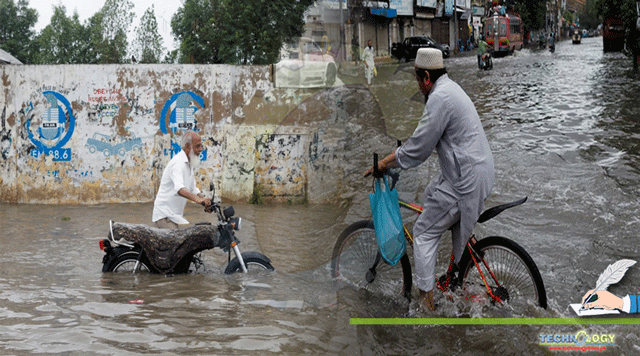These continuous spells of monsoons have caused mayhem killing at least 1050, including 340 children in Pakistan.

Three provinces – Punjab, Sindh, and Balochistan – find themselves in hot water, leaving hundreds of thousands of being homeless, shelterless, and foodless. These continuous spells of monsoon have caused mayhem, killing at least, 1050, including 340 children.
Pakistan is one of the most vulnerable countries- contributes less than 1%- affected by climate change. Climate change has caught us unprepared, and we are engulfed by climate miseries.
The active spells of monsoon with rain wreaking havoc, the Pakistan meteorological department has said as much about 385 pc higher rainfalls in Sindh and 71 pc in Balochistan so far this summer.
The higher rainfalls had been preceded by lethal heatwaves in the two provinces, which created the conditions favorable for the disaster that later unfolded. It is speculated that these extreme weather patterns may become the new normal for the country.
Every day adds to the death toll from this year’s rain, with Sindh and Balochistan among the worst-hit provinces by climate catastrophe.
Human activities from pollution to overpopulation are driving up the earth’s temperature and fundamentally changing the world around us. The main cause is the phenomenon known as the greenhouse effect gases in the atmosphere, such as water vapor, carbon dioxide, methane, nitrous oxide, and chlorofluorocarbons let the sunlight in but keep some of them from escaping like the glass walls of a greenhouse. The more greenhouse gases in the atmosphere, the more heat gets trapped strengthening the greenhouse effect and increasing the earth’s atmosphere.
Human activities like the burning of fossil fuels have increased the amount of Carbon in the atmosphere by more than a third since the industrial revolution. The rapid increase in greenhouse gases in the atmosphere has warmed the planet at an alarming rate. While the earth’s climate has fluctuated in the past; atmospheric carbon dioxide hasn’t reached today’s levels in hundreds of thousands of years.
Climate change has consequences for our oceans, our weather, and our food resources, and ice sheets such as Greenland and Antarctica are melting. The extra water that was once held in glaciers causes sea levels to rise and spills out of the oceans flooding coastal regions. Warmer temperatures also make weather more extreme. This means not only more intense major storms, floods, and heavy snowfall but also longer and more frequent droughts; these weather changes pose challenges.
In addition to creating new agricultural challenges, climate change can directly affect people’s physical health in urban areas. The warmer atmosphere creates an environment that traps and increases the amount of smog. Thus, smog contains ozone particles which increase rapidly at higher temperatures.
Exposure to higher levels of smog can cause health problems such as asthma, heart disease, and lung cancer.
While the rapid rate of altering climate change is caused by humans, humans are also the ones who can combat it if we work to replace fossil fuels with renewable energy sources like solar and wind which don’t produce greenhouse gas emissions; we might still be able to prevent some of the worst effects of Climate change.
Given the scale of destruction by climate change, there is a dire need to forge a consensus on this grave issue to contain this perpetual menace.